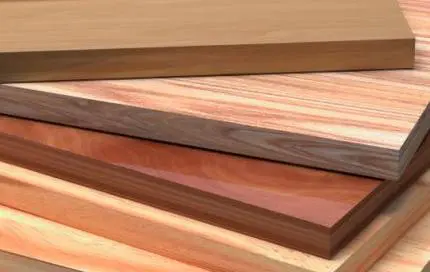Hint: Kitchen cabinets are one of them!

When you think of furniture, cabinets, and lumber, you probably think about wood. If you are familiar with the furniture and cabinet industry then you probably think about woods like maple, oak, walnut, mahogany, or birch.
These are the common hard woods that will usually be used in making quality cabinets and also used throughout other forms of woodworking. Seemingly out of nowhere, a new contender has arrived. Rubberwood, the wood we get from rubber trees, is being used more and more for cabinets and a variety of other surprising products.

Rubber Trees: a History

Rubber trees, Hevea Brasiliensis, were originally found in and around the amazon basin. The rubber produced from the rubber tree was introduced, in a very simple form, to Europeans as they explored the American continents in the 1500s. In the 1700s, it was brought back to England and other European countries as an eraser product. But all of that was just the beginning. By the 1800s, rubber products exploded into popularity with so many new uses. Rubber was being used for things like shoe soles and rubber tubing but the big game changer was rubber tires.
Talk about reinventing the wheel. Think about all the hundreds of things you see on a daily basis that have wheels. Before rubber, these wheels would have been made out of wood or some other less desirable material. Even to this day, we generate seemingly endless demand for rubber products in the form of latex gloves, condoms, car tires, and fitness balls.
The Origin
Don’t get the wrong idea about all this rubber that is being produced. There are people out there that will point their finger at any tree related product and scream about “Deforestation!” In reality though, just like with paper products, the trees used to harvest rubber materials are mostly all grown on farms. Most of these rubber tree farms where the majority of our rubber is produced are located in Southeast Asia.

The Process
Seemingly endless rows of rubber trees are drilled and tapped in a similar manner that is used to get maple extract from maple trees. The milky white liquid is collected in buckets and then used to produce all kinds of useful rubber products that improve our lives.
Finally after all the useful rubber liquid has been drained from the tree you are left with a tree that needs to be disposed of. In a wonderful stroke of eco-friendly thinking, cabinet companies have started to repurpose the rubber tree wood for cabinets. Rubber tree wood is a hard wood. With a Janka rating of around 995 pounds, rubberwood holds up well to abuse and impact. It’s about as hard as Cherry but not quite as hard as Oak. The cost of rubber tree wood is less than what you would expect to pay for fancy hard woods like walnut or cherry. Rubberwood takes stain very well so it is not hard to create beautiful cabinets with the look of walnut, maple, mahogany, ebony or cherry. All kinds of wood experience shrinkage and expansion with major changes in heat and humidity. Perhaps the best feature of rubberwood is that it doesn’t suffer from shrinkage as much as other kinds of wood. With so many positive features it is a wonder that more cabinets are not made from rubberwood.

Cabinet Products
There are a number of traditional cabinets that can be made using rubberwood such as shaker style cabinets with solid slabs of rubberwood. Our cabinets take advantage of rubberwood’s stability and resistance to shrinking and warping. The doors are made from a single solid piece of rubberwood. 
This technique prevents the consistent cracking and chipping of paint on and around the corners of the doors where the frame pieces meet.
Other Rubberwood Products
It’s not just cabinet companies that are making use of rubberwood. Cutlery companies are also taking advantage of the wood from the rubber tree for their knife blocks. A lot of people’s kitchen knives consist of a small chef knife, a bread knife, and some steak knives that they bought at target. These knives usually end up sitting in a drawer somewhere in their kitchen. There is nothing inherently wrong with storing your cutlery in this way but for a lot of people this is just not preferable. I previously wrote a little bit about storing cutlery in Creative Kitchen Storage, where I said something to the effect of: A beautiful countertop knife block is the best way to show off that exceedingly expensive cutlery set that you are still making payments on.

Knife blocks are often made of oak, cherry, bamboo, and walnut; and they are often surprisingly expensive. Just like the cabinet companies, cutlery companies can save money by using reclaimed rubber tree wood. This wood works well for knife blocks, it looks great, and it allows the cutlery company to pass the savings on to the consumer.
Naturally, if cutlery companies are using rubberwood to make knife blocks, you probably already guessed that rubberwood is also used for cutting boards and butcher blocks.
Many of the rubberwood qualities that make it a good choice for knife blocks also make it a wise choice for wooden cutting boards.
Conclusion
Rubberwood may not have the name recognition that you get with other hard woods but it is a great choice. Small kitchen devices like cutting boards, knife blocks, and butcher blocks have all used rubberwood with great success. The real significant use for rubberwood will probably continue to be the hard wood doors and frames on kitchen cabinets. It is possible that in the future another low cost hard wood option will present itself, but if you are looking for premium quality cabinets without the premium price tag, Rubberwood RTA cabinets are the way to go.





